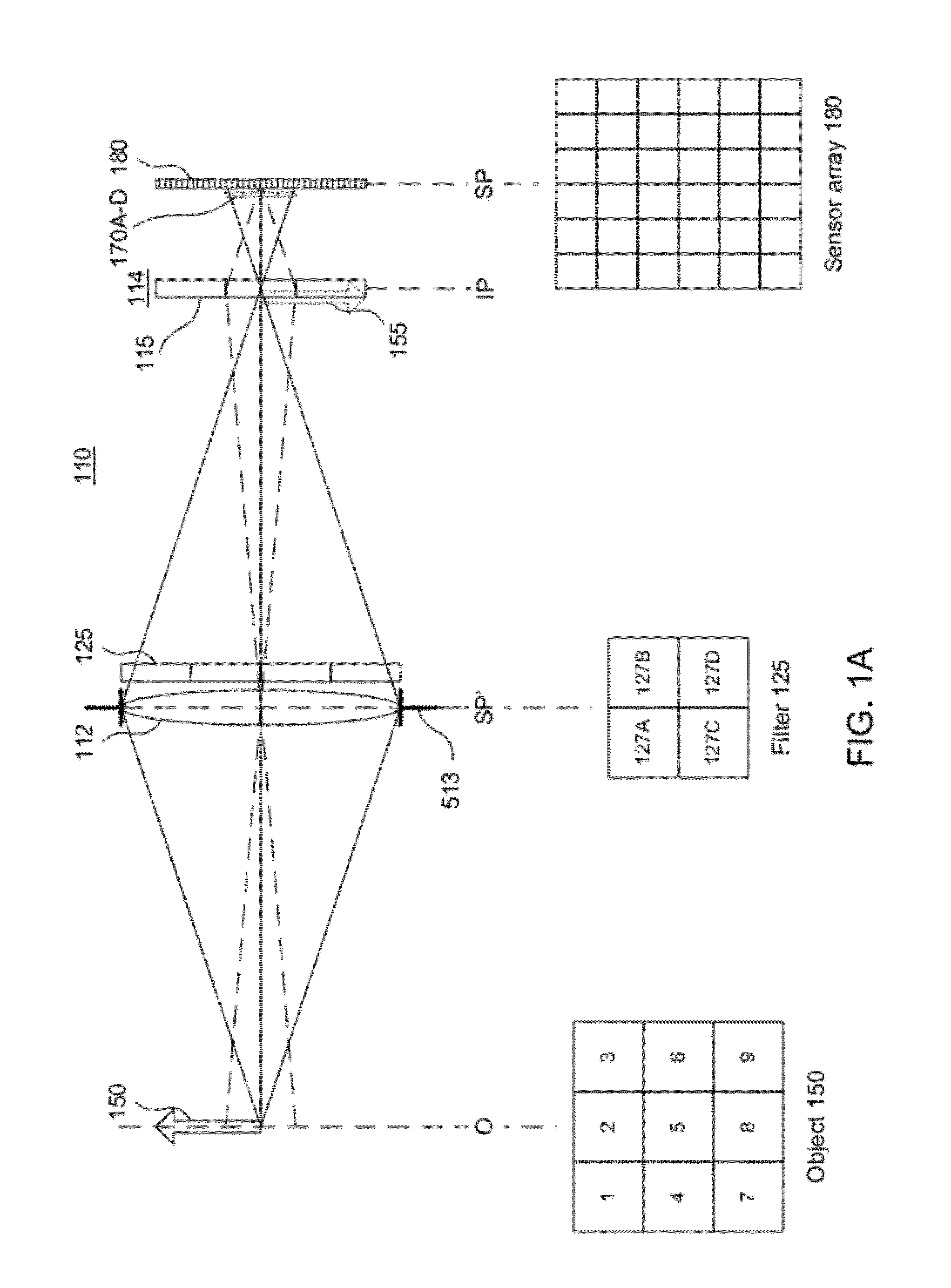Design of Filter Modules for Aperture-coded, Multiplexed Imaging Systems
a technology of multiplexed imaging and filter modules, applied in the field of imaging systems, can solve the problems of difficult acquisition of multiple images, large and complex systems, and difficult to capture the second spatial dimension of objects, and achieve the effect of reducing spectral crosstalk and reducing the crosstalk between different filter cells
- Summary
- Abstract
- Description
- Claims
- Application Information
AI Technical Summary
Benefits of technology
Problems solved by technology
Method used
Image
Examples
specific examples
[0085]Three specific example applications are now described. The first one is the capturing of photographic information with a Bayer-pattern-type filter. In the second application, the filter module is designed for equal signal-to-noise ratios in the different captured spectral images. The third application is detecting signals in noise. All three applications use the same design parameters: main lens diameter D=40 mm, main lens focal length=50 mm, microlens diameter d=130 micron and microlens focal length=1.650 mm.
[0086]Photographic Application.
[0087]We consider a filter module that uses the RBG Bayer-pattern shown in FIG. 5C. In this case, the ring segments are compete annuli (rings) and the parameter description of the partition is as follows: N=3, M (1)=M (2)=M (3)=1; φ1,1=φ2,1=φ3,1=2π, φ0,1,1=φ0,2,1=φ0,3,1=0. That means we have only two optimization variables δ1, δ2. To simulate spectral responses for the three RGB filters we choose ρ1=450 nm, ρ2=550 nm, ρ3=650 nm.
[0088]To opti...
PUM
 Login to View More
Login to View More Abstract
Description
Claims
Application Information
 Login to View More
Login to View More - R&D
- Intellectual Property
- Life Sciences
- Materials
- Tech Scout
- Unparalleled Data Quality
- Higher Quality Content
- 60% Fewer Hallucinations
Browse by: Latest US Patents, China's latest patents, Technical Efficacy Thesaurus, Application Domain, Technology Topic, Popular Technical Reports.
© 2025 PatSnap. All rights reserved.Legal|Privacy policy|Modern Slavery Act Transparency Statement|Sitemap|About US| Contact US: help@patsnap.com



